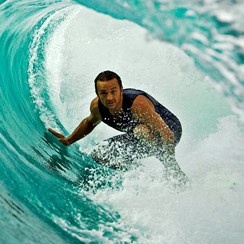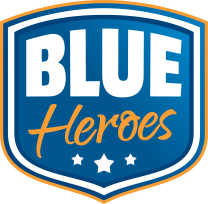26 April 2022
By Tim Baker
Imagine if there was a single treatment that neatly addressed many of the side effects of prostate cancer and its treatment. A silver bullet that could improve cardio-vascular health and bone density compromised by hormone therapy, reduce fatigue, improve mental health, that might slow cancer’s progress and even assist sexual function?
What is this miracle treatment, you might ask?
It’s called exercise and its benefits are so profound and multi-layered that a growing chorus of medical researchers are calling for it to be prescribed as part of standard care for all cancer patients. And it offers particularly valuable benefits to men with prostate cancer.
In 2018, the Clinical Oncology Society of Australia released a position statement on exercise and cancer care: “Clinical research has established exercise as a safe and effective intervention to counteract the adverse physical and psychological effects of cancer and its treatment.” Its recommendations include:
- exercise to be embedded as part of standard practice in cancer care and to be viewed as an adjunct therapy that helps counteract the adverse effects of cancer and its treatment;
- all members of the multidisciplinary cancer team to promote physical activity and recommend that people with cancer adhere to exercise guidelines; and
- best practice cancer care to include referral to an accredited exercise physiologist or physiotherapist with experience in cancer care.
Those of you who read last week’s blog will know that exercise is the second pillar in my own cancer self-care mantra: “Just remember to take your M.E.D.S – meditation, exercise, diet, sleep.” This week I’d like to delve deeper into the exciting and compelling evidence of the multi-layered benefits of exercise for men with prostate cancer.
Several studies have looked at the potential for exercise to help overcome Cancer Related Fatigue (CRF), which is a particularly acute issue for men on hormone therapy. A 2017 study, Nutrition therapy with high intensity interval training to improve prostate cancer-related fatigue in men on androgen deprivation therapy: a study protocol, suggested high intensity interval training, combined with a Mediterranean-style diet high in fresh fruit and vegetables and low in red meat, offered significant benefits:
“Natural therapies such as diet and exercise provide a multi-faceted approach to managing CRF, which may in turn improve other associated side effects seen from ADT (e.g. metabolic and cardiovascular risk).”
The Gap4 Interval Study: a multicentre, randomised, controlled phase III study protocol, goes a step further and is examining whether supervised, high-intensity interval training could increase survival times for men with metastatic prostate cancer: “Preliminary evidence supports the beneficial role of physical activity on prostate cancer outcomes. This phase III randomised controlled trial (RCT) is designed to determine if supervised high-intensity aerobic and resistance exercise increases overall survival (OS) in patients with metastatic castrate-resistant prostate cancer (mCRPC).”
I’m participating in the Gap4 Interval Study, but unfortunately, I was randomised into the control group, which does not receive supervised training. Even so, the six-monthly fitness testing it involves is a good indicator whether my physical powers are in decline. Happily, so far at least, it appears I’m doing enough exercise on my own to hold my ground or even improve my fitness levels.
My introduction to exercise as a tool to help manage my diagnosis came via a University of Queensland exercise clinic for cancer patients, which is run annually by UQ’s final year exercise physiology students. This provides hands-on experience for the students before graduating, as well as valuable physical therapy for the participants. I was teamed up with a pair of enthusiastic students for an intense, weekly exercise session over six weeks and the benefits of supervised exercise were immediately obvious to me.
The cruel irony here is the very thing that men with prostate cancer would benefit from is often the hardest thing to accomplish because of the fatigue associated with hormone therapy and other treatments. Having an eager exercise physiology student barking instructions at you like a sergeant major at boot camp appears to me an effective strategy for banishing CRF.
The lessons learnt at the UQ exercise clinic have stayed with me and I try and do some sort of exercise every day. I go to a Pilates class once a week, where I receive some of the robust arse-kicking I require. I bought a second-hand weight set on Gumtree and have a little 15-minute routine I try to bang out three or four times a week.
I’ve gotten lucky with surfing, as it’s pretty much the most enjoyable form of exercise ever invented and neatly encapsulates many elements that are good for me: paddling out and duck diving waves provides an intense aerobic work-out. Sitting out the back scanning the vast blue undulations of the Pacific Ocean for tell-tale signs of an incoming swell can be deeply meditative. Riding waves is a unique gymnastic exercise that requires a spontaneous and intuitive reading of the breaking wave, a kind of active meditation, during which it is virtually impossible to obsess on your land-based stressors. Just to paddle out into the ocean is to lose yourself, to become absorbed in something greater than our individual egos and anxieties.
Even if this level of physical activity feels daunting, there is growing evidence for the efficacy of exercise “snacking,” short, sharp periods of physical exertion for a couple of minutes at a time throughout your day. “Little and often,” is the catchcry of the exercise snacking approach. I sometimes do a few leg raisers while watching TV just to work the abs and soothe sedentary guilt or swim a few laps if I haven’t managed much else in my day.
Over in the West at Edith Cowan University, they are making the case that exercise could be regarded as powerful anti-cancer medicine. In a study published in February 2022, Myokine Expression and Tumor-Suppressive Effect of Serum after 12 weeks of Exercise in Prostate Cancer Patients on ADT, researchers found that exercise causes muscles to secrete proteins called myokines into our blood, which can suppress tumour growth and help fight cancerous cells.
The clinical trial saw obese prostate cancer patients undergo regular exercise training for 12 weeks, giving blood samples before and after the exercise program. Study supervisor Professor Robert Newton said the results help explain why cancer progresses more slowly in patients who exercise.
“The patients’ levels of anti-cancer myokines increased in the three months,” he said. “When we took their pre-exercise blood and their post-exercise blood and placed it over living prostate cancer cells, we saw a significant suppression of the growth of those cells from the post-training blood. That’s quite substantial, indicating chronic exercise creates a cancer suppressive environment in the body.”
More research is being undertaken to strengthen the case for exercise as medicine, but in the meantime, why wait? All you’ve got to lose is a few kgs and perhaps your favoured spot on the couch in front of Netflix.
Of course, all exercise should be undertaken in consultation with your health care professionals to avoid any adverse outcomes.
References
Newton RU, Kenfield SA, Hart NH, et al
Intense Exercise for Survival among Men with Metastatic Castrate-Resistant Prostate Cancer (INTERVAL-GAP4): a multicentre, randomised, controlled phase III study protocol BMJ Open 2018;8:e022899. doi: 10.1136/bmjopen-2018-022899
Baguley, B.J., Skinner, T.L., Leveritt, M.D. et al. Nutrition therapy with high intensity interval training to improve prostate cancer-related fatigue in men on androgen deprivation therapy: a study protocol. BMC Cancer 17, 1 (2017).
https://doi.org/10.1186/s12885-016-3022-6
Kim, J; Wilson, R; Taaffe, D; Galvão, D; Gray, E; Newton, R. Myokine Expression and Tumor-Suppressive Effect of Serum after 12 wk of Exercise in Prostate Cancer Patients on ADT, Medicine & Science in Sports & Exercise: February 2022 - Volume 54 - Issue 2 - p 197-205 doi: 10.1249/MSS.0000000000002783
Perkin OJ, McGuigan PM, Stokes KA. Exercise Snacking to Improve Muscle Function in Healthy Older Adults: A Pilot Study. J Aging Res. 2019;2019:7516939. Published 2019 Oct 3. doi:10.1155/2019/7516939
Cancer Breakthrough: Exercise may stop disease in its tracks, Edith Cowan University website, October, 2021.
https://www.ecu.edu.au/newsroom/articles/research/cancer-breakthrough-exercise-may-stop-disease-in-its-tracks
About the Author

Tim Baker is an award-winning author, journalist and storyteller specializing in surfing history and culture, working across a wide variety of media from books and magazines to film, video, and theatre. Some of his most notable books include “Occy”, a national bestseller and chosen by the Australia Council as one of “50 Books You can’t Put Down” in 2008, and “The Rip Curl Story” which documents the rise of the iconic Australian surf brand to mark its 50th anniversary in 2019. Tim is a former editor of Tracks and Surfing Life magazines. He has twice won the Surfing Australia Hall of Fame Culture Award.
Tim was diagnosed with stage 4, metastatic prostate cancer in 2015 with a Gleason score 9. He was told he had just five years of reasonable health left, but seven years on, at 57, he’s still surfing, writing, and enjoying being a dad. His latest book, Patting The Shark, also documents his cancer journey and will be published in August. Tim will be sharing weekly insights into his journey to help other men who have also been impacted by prostate cancer.
